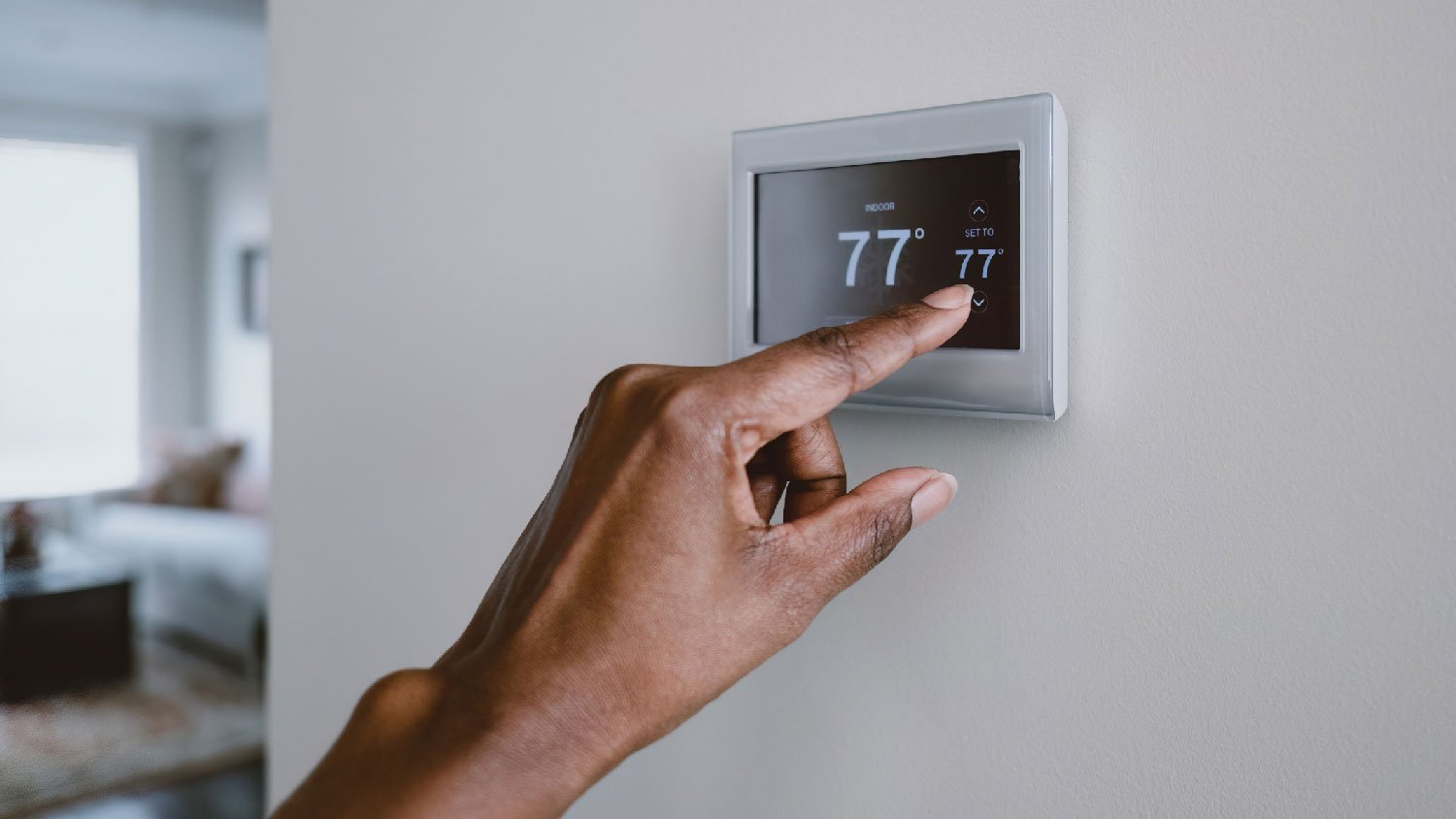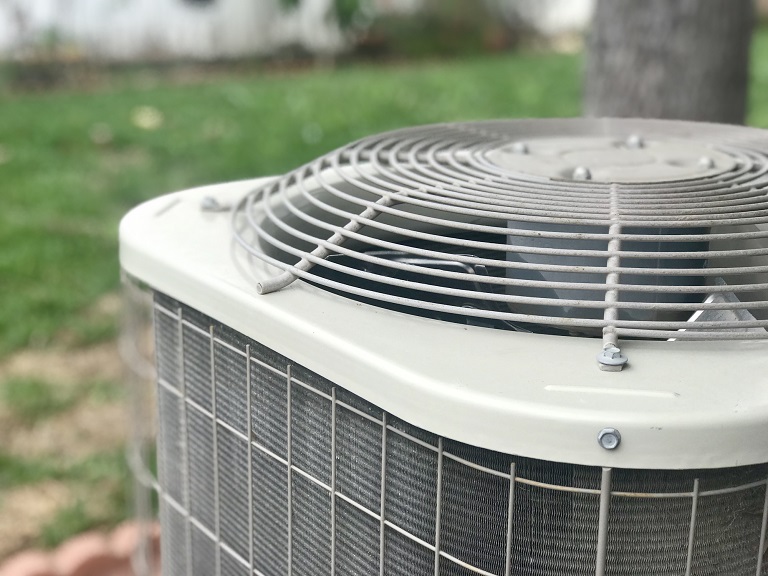
A faulty evaporator coil is a common cause of AC failure. But how much does an evaporator coil replacement cost? We explore the factors here.
A new thermostat is worth its weight in cold


Thermostats last about 10 to 35 years and cost $115 to $270 to replace.
Low-tech thermostats last longer but have fewer functions.
Smart thermostats last around 10 years before the technology becomes outdated.
A malfunctioning thermostat may be a sign of old batteries or damaged wires.
Replace a faulty thermostat ASAP to avoid high energy bills.
We depend on them to keep our homes comfy, whether it’s hot and sunny or cold and snowy. But do you know how long thermostats last? Many of the programmable thermostats on the market today, including flashy smart thermostats, can last about 10 years. Non-programmable models without the added bells and whistles may even last up to 35 years. Here’s how to tell the life span of your thermostat and whether it’s time for a new one.
Thermostats can last for 10 to 35 years, depending on the type and usage. Older, analog thermostats (aka the kind of thermostat that you can’t program to automatically change temps throughout the day) may last up to 35 years. However, you may want to replace analog thermostats with more modern models that can adjust the heating or AC temperature to save energy and grant you optimal comfort.
Modern thermostats, including smart thermostats, last 10 years before the technology is no longer up to speed. After 10 years, the once-high-tech smart thermostat may be lagging or glitching, which can cost you in higher energy bills.
Expect to swap out the batteries in your thermostat every eight to 12 months. Many modern thermostats include a battery to provide backup power in case of a power outage. Make a reminder for yourself to refresh the batteries every eight months so that your thermostat still works if there’s an unexpected outage.
There are several signs that it may be time for a new thermostat:
Age: If your thermostat is over 10 years old, consider replacing it.
High energy bills: This can be a sign of many problems, but your thermostat may be malfunctioning, causing the HVAC system to run excessively.
Temperature fluctuations: One minute, the room is hot. The next minute, you’re reaching for a blanket. This is a sign that the thermostat may be struggling to keep a set temperature or the sensor is worn out.
Short cycling: If the thermostat is quickly shutting the heating or cooling on and off without completing a cycle, it may mean the thermostat is not working.
Forgotten settings: The benefit of modern, programmable thermostats is being able to save your settings. A thermostat that keeps erasing your settings may be malfunctioning, possibly because of outdated technology.
HVAC doesn’t turn on: If the heating or cooling isn’t turning on at all, the thermostat is not sending the proper signals to the HVAC system.

With life spans ranging from around 10 to 35 years, thermostats are designed to last a long time. But whether they make it to 10 or more years depends on many factors, from where and how the thermostat is installed to how often you use it and how well it’s maintained.
If a thermostat is located on a wall that gets a lot of sunlight or in a room that tends to be pretty humid, it can have a shorter life span. Any prolonged exposure to heat and moisture can make the thermostat work harder or more frequently (or it can simply heat up and wear out the parts). If possible, make sure your installation pro avoids installing a thermostat near heat sources, like an oven or water heater, or in sunny or humid spaces, like a bathroom.
While it’s possible for handy homeowners to install a thermostat, your thermostat’s longevity heavily depends on proper installation by a pro. Any loose or faulty wiring can cause a malfunction, and even using the wrong batteries or placing the thermostat on a sunny wall or near a drafty window can cause the thermostat to work improperly. This can lead to higher energy bills, so consider working with a pro for thermostat installation or replacement to extend the unit’s life span.
The more you use the thermostat, the faster it will wear out. If possible, plan to program your thermostat to a comfortable temperature each season rather than changing the temperature settings frequently. However, keep in mind that with smart thermostats, utilizing the thermostat’s ability to self-regulate may mean the temperature settings shift more often. But a smart thermostat can still save you money on energy costs.
Maintenance is essential for a long-lasting thermostat. Failing to clean the thermostat at least a couple of times per year could cause dust to build up. That dust can cover the temperature sensors or clog the thermostat’s vents, leading to overheating or improper temperature readings. Additionally, make sure to replace the batteries about every eight months.
The best way to make sure your thermostat lasts 10 years or longer is to keep up with regular maintenance and inspections. Some easy tips to extend your thermostat’s life include:
Clean it regularly: Wipe away dust with a clean, dry cloth at least a couple of times per year.
Do a temperature check: Use a separate thermometer to gauge the room temperature and compare it to your thermometer a few times a year to make sure the thermostat is working as intended.
Replace the batteries: Every eight months or so, swap out the batteries in the thermostat to keep the unit in working condition.
Inspect the thermostat box: Look around the exterior of the thermostat for any signs of cracking or other physical damage. If you notice damage, call in a pro to inspect the entire system.
Schedule an inspection: You should hire an HVAC expert to inspect your HVAC system at least once per year. As part of that inspection, make sure the pro takes a look at the thermostat.
Just because your thermostat seems to be bugging out doesn’t necessarily mean it needs to be replaced. A drafty window nearby, some dust and debris buildup, or even dead batteries can cause your thermostat to act up. Here are some common ways to troubleshoot a thermostat:
Check for drafts: Sometimes, the thermostat is running excessively or showing the wrong temperature because of a draft. If you notice a draft, find and solve the cause, then check if the thermostat is still working improperly. If so, it may need a replacement.
Clean the thermostat: Dust buildup on a thermostat can prevent the thermostat from properly sensing the room temperature. If you clean your thermostat thoroughly, it may just start working like new again.
Change the batteries: If it’s been more than eight months since you last replaced the thermostat batteries, it may stop working.
Check the battery type: When you change the thermostat batteries, make sure to replace them with compatible batteries that are placed correctly.
Look for signs of a trip: Your thermostat may erase your settings or show a blank screen if the circuit breaker tripped. Check the breaker to see if it was tripped.
Inspect for loose wiring: Loose wiring can also prevent a thermostat from working properly. Call in an electrician to take a look and make any necessary repairs.

If you purchase a new thermostat at a home improvement store or other retailer, it usually includes a base limited warranty of around one to two years, with some warranties lasting up to five years. If you purchase a thermostat, register it, and have it professionally installed, it may include a registered limited warranty of three to five years. Some high-end thermostat models boast a warranty of up to 10 years.
If your thermostat is only a few years old but stops working, try troubleshooting first. Cleaning the thermostat and replacing the batteries are quick fixes that anyone can DIY. From there, consider hiring a thermostat installation professional near you to inspect for potential problems. They can quickly find the problem and make a repair or determine if you need a replacement.
If your thermostat is causing your energy bills to skyrocket or is more than 10 years old, it’s probably best to go ahead and replace the thermostat.
From average costs to expert advice, get all the answers you need to get your job done.

A faulty evaporator coil is a common cause of AC failure. But how much does an evaporator coil replacement cost? We explore the factors here.

The cost of a new AC unit depends on the size and type. Our guide breaks down AC replacement cost factors so you can decide which option matches your budget.

Find out the average humidifier repair cost, what impacts pricing, and how to save. Get expert tips to budget for your humidifier repair.

Discover the average air handler replacement cost, including labor and materials, plus expert tips to help you budget and save on your HVAC upgrade.

While costly to install, heat pumps are an efficient and eco-friendly way to heat and cool your home, no matter the season.

You’ll need to get creative if you want to run your portable AC in a windowless room. Here’s how to vent a portable air conditioner without a window.